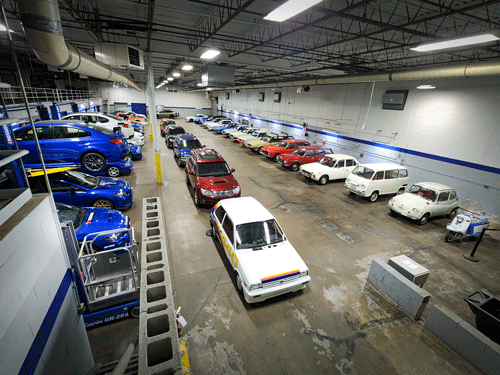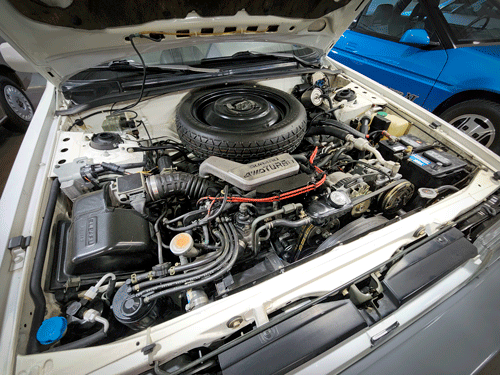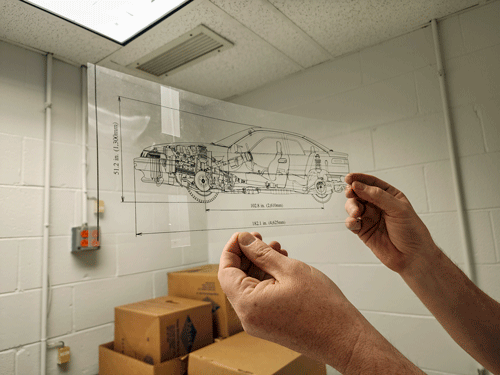I Get an Insider’s Look at the Japanese Automaker’s Private Collection
There are dozens of pristine Subaru vehicles quietly kept in a private and unassuming location. From one-of-a-kind racers and concept cars to vintage collectibles and right-hand-drive rarities, I got unique access few will ever have: a private tour with Subaru employees to peruse through Subaru of America’s entire private vehicle collection.
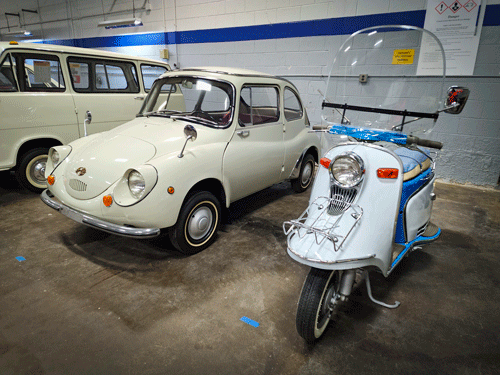
I walked next to vehicles only dreams were made of and others that carved their niche into history. I passed 3-speed manual 360 microcars that back in the day, generated 356 ccs with their stock two-cylinder air-cooled engines—their 70.9 wheelbase making short work of challenging parking spots. I learned about Subaru of America’s very first vehicle ever sold in the United States: a 1960s Rabbit motor scooter. Yes, there sat a baby-blue hued two-wheeled people hauler I desperately wanted to take for a spin.
We strolled past gen-1 and gen-2 Subaru BRATs that donned all the optional goodies (including the auxiliary lights and rear-facing seats) and reveled over WRXs that won rally championships and ate gallons of gravel for breakfast. I even got to see a rare, pristine white 1989 RX4 Turbo, the predecessor to the famed WRX.
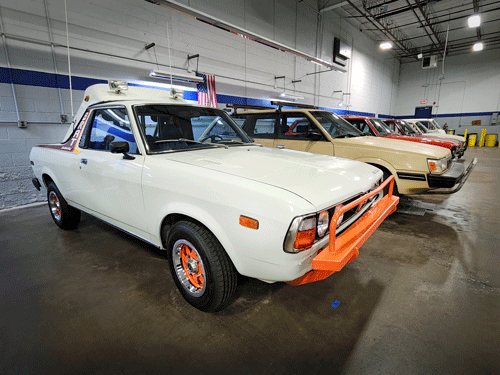
The nondescript warehouse exuded all things Subaru. Its history displayed within those plain walls, from then through now was formidable. All three generations of Subaru DL and GL (simply referred to as the Leone in Japan) were present, originally made in the 1970s and ‘80s. From hardtops and hatchbacks to sport coupes, station wagons, as well as two-and four-door sedans, the Subaru DL/GL didn’t scratch over 100 horsepower until the 1980s, but it was the auto manufacturer’s top seller, mostly purchased with the company’s optional four-wheel-drive system until 1989 when the Legacy was introduced. The DL/GL’s chrome detailing and black body accents were popular among many, though by 1990 the single- or double-letter namesake distinguishing each trim level changed to Loyale in Canada and the United States.

“Our history is quite a bit different than other Japanese brands, which started as a direct effort of the parent company,” said Todd Hill, Product Public Relations Manager of Subaru of America, or SOA for short. “Subaru of America was originally founded by Harvey Lamm and Malcom Bricklin in 1968.” To this day, SOA remains as is.
“[Subaru of America] operated as a fully independent distributor of Subaru vehicles until 1990, when it became a wholly owned subsidiary of Fuji Heavy Industries, Hill added, “which became Subaru Corporation in 2016.”

That evolution married a plethora of interesting vehicles under one multi-roomed roof. Not only did this space hold classics and rally cars, but it cradled Japanese Domestic Market (JDM) right-hand-drives that would make me sell a kidney to them (seriously speaking). One of Subaru’s most prized possessions, which I was told once was a U.S. press fleet vehicle at one point, is a JDM 1998 Impreza WRX 22B STi. With just 424 of them built worldwide, they were manufactured to celebrate three Subaru back-to-back WRC rally series titles, as well as the auto manufacturer’s fourth decade in business. I was lucky enough to sit in it and as I was transported to another dimension for 60 seconds, my mind went wild with go-fast explosions as I closed my eyes in anticipatory glee.
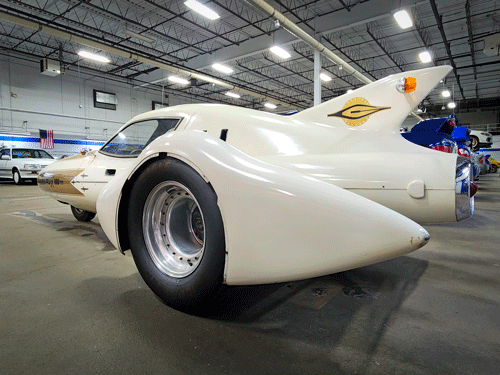
Hill continued to show me their secret back rooms. What I discovered was a treasure trove of original hand sketches, marker renderings, and other paraphernalia that linked Subaru’s dynamically colorful history together. An oversized flat file contained hundreds of line drawings, pamphlets, and more.
Carefully notated exploded diagrams and other cutaway pictorials brought me back to my previous interior design career when my hand swept over sketch papers in a similar fashion. Hand-rendering may be a lost art, but one cherished by those who’ve practiced it.
Subaru signs, engines, and transmission sections, and even miscellaneous vehicle car parts finished off my tour. This unexpected trip down Subaru’s memory lane was one not to be forgotten, especially by a Subie fan like me.




